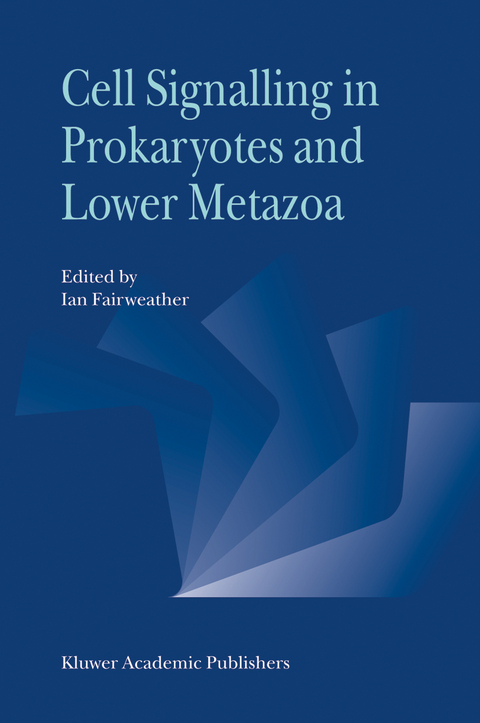
Cell Signalling in Prokaryotes and Lower Metazoa
Seiten
2003
|
2004 ed.
Springer-Verlag New York Inc.
978-1-4020-1739-1 (ISBN)
Springer-Verlag New York Inc.
978-1-4020-1739-1 (ISBN)
Cell signalling lies at the heart of many biological processes and currently is the focus of intense research interest. In multicellular organisms, it is central to how different types of cell communicate with each other and how they detect and respond to extracellular signals. Intercellular communication is vital to single-celled organisms as well, allowing them to respond to environmental cues and signals.
To date, much of the understanding of signalling mechanisms has come from research on specific cell types (eg mouse lymphocyte and cardiomyocyte) or on organisms in which communication systems such as nervous and endocrine systems are well established. This volume therefore aims to 'fill the gap' by concentrating on 'simple organisms' where the elements of those signalling systems first evolved. Many of the groups covered contain important pathogens or parasites, and the potential for manipulating signalling pathways for therapeutic intervention will be highlighted.
To date, much of the understanding of signalling mechanisms has come from research on specific cell types (eg mouse lymphocyte and cardiomyocyte) or on organisms in which communication systems such as nervous and endocrine systems are well established. This volume therefore aims to 'fill the gap' by concentrating on 'simple organisms' where the elements of those signalling systems first evolved. Many of the groups covered contain important pathogens or parasites, and the potential for manipulating signalling pathways for therapeutic intervention will be highlighted.
Preface.- 1 G proteins and MAP kinase cascades in the pheromone response of fungi.- 2 Prokaryotic intercellular signalling — Mechanistic diversity and unified themes.- 3 Signal transduction mechanisms in protozoa.- 4 Signalling systems in cnidaria.- 5 Neuropeptides in cnidarians.- 6 Signalling mechanisms in platyhelminths.- 7 Control of Caenorhabditis elegans behaviour and development by G proteins big and small.- 8 Electrophysiological and pharmacological studies on excitable tissues in nematides.- 9 Evidence for an annelid neuroendocrine system.- 10 Ion channels of microbes.- 11 Bacterial signal transduction: Two-component signal transduction as a model for therapeutic intervention.- Index.
| Erscheint lt. Verlag | 31.12.2003 |
|---|---|
| Zusatzinfo | 11 Illustrations, color; 22 Illustrations, black and white; VIII, 412 p. 33 illus., 11 illus. in color. |
| Verlagsort | New York, NY |
| Sprache | englisch |
| Maße | 160 x 240 mm |
| Themenwelt | Naturwissenschaften ► Biologie ► Limnologie / Meeresbiologie |
| Naturwissenschaften ► Biologie ► Mikrobiologie / Immunologie | |
| ISBN-10 | 1-4020-1739-1 / 1402017391 |
| ISBN-13 | 978-1-4020-1739-1 / 9781402017391 |
| Zustand | Neuware |
| Haben Sie eine Frage zum Produkt? |
Mehr entdecken
aus dem Bereich
aus dem Bereich
Naturerfahrungen zwischen Quelle, See und Wildfluss
Buch | Hardcover (2024)
Verlag Anton Pustet Salzburg
CHF 41,95
Buch | Hardcover (2022)
National Geographic Deutschland (Verlag)
CHF 55,95


